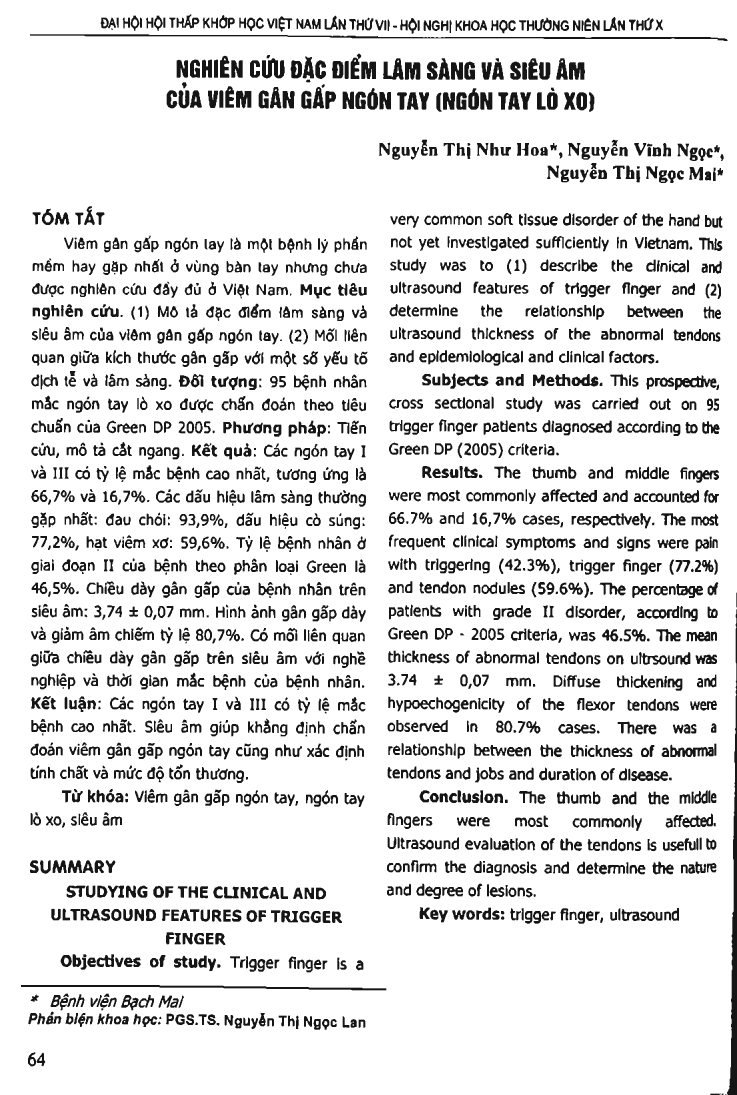
Objectives of study: Trigger finger is a very common soft tissue disorder of the hand but not yet investigated sufficiently in Vietnam. This study was to (1) describe the clinical and ultrasound features of trigger finger and (2) determine the relationship between the ultrasound thickness of the abnormal tendons and epidemiological and clinical factors. Subjects and Methods. This prospective, cross sectional study was carried out on 95 trigger finger patients diagnosed according to the Green DP (2005) criteria. Results. The thumb and middle fingers were most commonly affected and accounted for 66.7 percent and 16,7 percent cases, respectively. The most frequent clinical symptoms and signs were pain with triggering (42.3 percent), trigger finger (77.2 percent) and tendon nodules (59.6 percent). The percentage of patients with grade II disprder, according to Green DP - 2005 criteria, was 46.5 percent. The mean thickness of abnormal tendons on ultrsound was 3.74 + or - 0.07 mm. Diffuse thickening and hypoechogenicity of the flexor tendons were observed in 80.7 percent cases. There was a relationship between the thickness of abnormal tendons and jobs and duration of disease. Conclusion. The thumb and the middle fingers were most commonly affected. Ultrasound evaluation of the tendons is useful! to confirm the diagnosis and determine the nature and degree of lesions.
- Đăng nhập để gửi ý kiến
